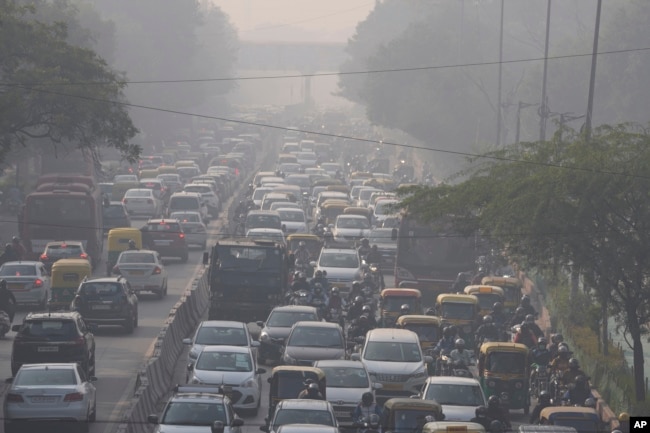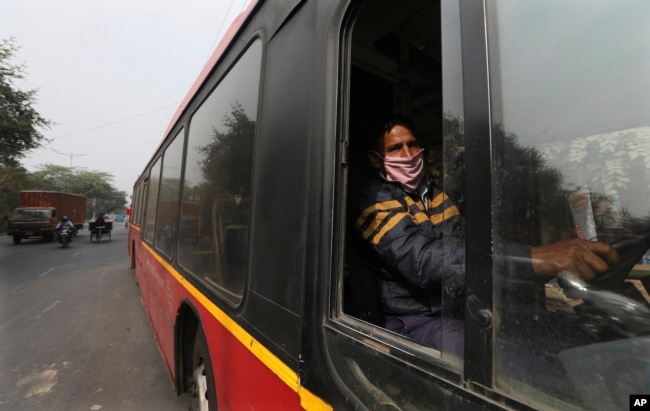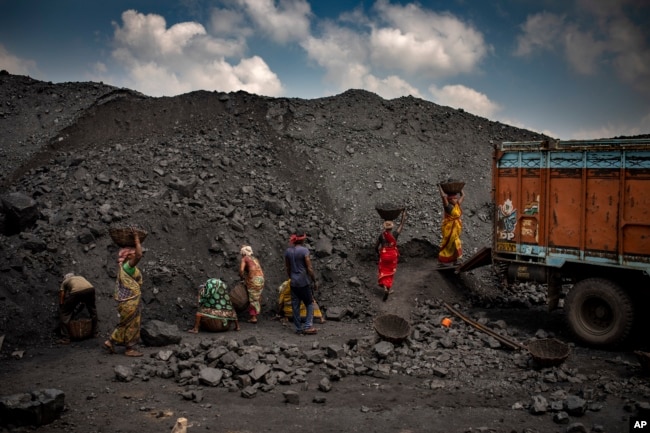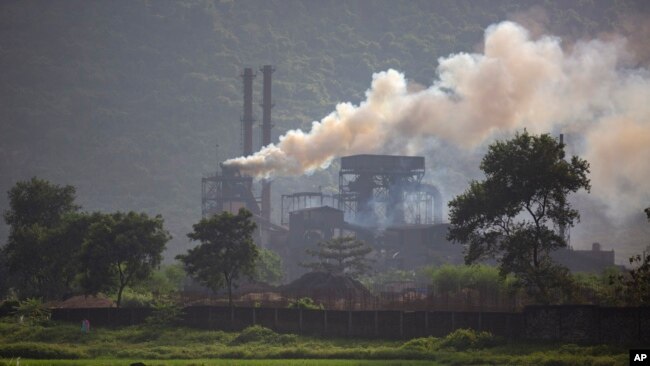発展するインドの石炭は止められるか?!
世界の国内総生産ランキングは現在第5位ですが、すぐにインドが3位になるであろうと考えられていますね。
地球を守る為には、インドの協力は不可欠です。さて...............
VOAで英語を学びましょう!!
インドが9,000億ドルで石炭を止められるとの試算(和訳)
Estimate Shows India Could Quit Coal for $900 Billion
April 01, 2023
インドが石炭からよりクリーンなエネルギーに移行するためには、約9,000億ドルの資金が必要であるとの新たな試算が発表されました。
この試算は、ニューデリーに拠点を置く環境政策グループiFORESTが最近発表したものです。
iFORESTは、インドが石炭やその他の高公害燃料から脱却するために、どれだけの資金が必要かを予測する2つの報告書を作成しました。この取り組みでは、石炭やその他の化石燃料を使用するセンターで働く人々のために、新しい産業の雇用を創出するために必要な金額が考慮されています。
気候やエネルギーの専門家たちは、よりクリーンなエネルギー燃料への移行に伴う経済的な損害を抑える方法を研究しようと長い間努めてきました。このような検討は、"ジャスト・トランジション "と呼ばれています。
iFORESTの代表であるチャンドラ・ブーシャン氏はAP通信に対し、”インドが化石燃料に依存する州や地区でグリーン成長を支援する”チャンスとして、正当な移行を捉えるべきであると述べています。
9,000億ドルという数字を出すために、グループはインドの4つの石炭地区を調査し、8つの異なるコスト要素を特定しました。その中には、設備、建物、労働者の職業転換のためのトレーニングなどが含まれています。
報告書は、移行を可能にするための最大の投資は、クリーンエネルギーのインフラを整備するための費用だと指摘しています。このコストは、2050年までに最大4,720億ドルに上ると推定されています。労働者がクリーンエネルギーの仕事に就けるようになるには、必要な総額の10%以下、つまり約90億ドルしかかからないと言われています。
iFORESTは、6,000億ドルが新しい産業やインフラへの投資としてもたらされると述べています。さらに3,000億ドルは、石炭産業の労働者や影響を受ける地域社会を支援するための政府支援の形で提供されることになります。
サンディープ・パイ氏は、ワシントンD.C.を拠点とする政策グループ、戦略国際問題研究所のメンバーです。彼はAP通信に対し、このような移行作業はインドにとって大きな意味を持つと考えています。この変化は、最大で2,000万人のエネルギー労働者に影響を与える可能性があると彼は言っています。「このような報告は非常に重要です。なぜなら、インドでは正当な移行に関する議論が今始まったばかりだからです。」「もっともっと必要だ」と彼は付け加えています。
インドが地球温暖化ガスを大量に排出していることは、研究によって明らかにされています。中国、米国、欧州連合だけがもっと排出しています。インドは、電力需要の75%、エネルギー需要全体の55%を石炭に依存しています。
今月初め、インド政府は、停電を避けるため、この夏まで石炭発電所をフル稼働させることを求める緊急命令を出しました。公式の数字によると、同国の石炭使用量は2035年から2040年にかけて最も多くなると予想されています。
2021年、インドのナレンドラ・モディ首相は、同国が2070年までにネット・ゼロ・エミッションを達成する目標を掲げたと発表しました。ネットゼロとは、国が排出する量と同数の排出物を除去することです。
国連のアントニオ・グテーレス事務総長は先日、世界各国に対し、ネットゼロの目標を加速させるよう促しました。また、途上国に対しては、2050年を目標年次とするよう呼びかけました。
最近の報道は、インド政府はまず、古くて採算の取れない鉱山や発電所を閉鎖することを目指すべきだと述べています。インドにある459以上の鉱山のうち、200以上の鉱山がこれで閉鎖することができます。
「エネルギー転換は石炭から始めなければなりません」と、インドのジャルカンド州のハザリバグという石炭の豊富な地域を代表する議員、ジャヤント・シンハ氏は言います。
クリーンエネルギーへの移行には、政府と環境保護団体による資金と支援の両方が必要だとシンハ氏は付け加えます。”両方が起こらなければなりません”と彼は言います、”移行を成功させる為に”。
Estimate Shows India Could Quit Coal for $900 Billion
A new estimate suggests India would need to spend about $900 billion to transition from coal to cleaner forms of energy.
The estimate was recently released by the New Delhi-based environmental policy group iFOREST.
iFOREST produced two reports that attempted to predict how much money it would take for India to move away from coal and other high-polluting fuels. The effort took into account the amount of money required to create new industry jobs for people employed at centers using coal and other fossil fuels.
Climate and energy experts have long sought to study ways to limit the economic harms of transitioning to cleaner energy fuels. Such considerations have been called “just transition.”
iFOREST head Chandra Bhushan told The Associated Press that just transition should be seen as a chance “for India to support green growth in the country’s fossil fuel dependent states and districts.
To get the $900 billion number, the group studied four coal districts in India and identified eight different cost elements. These included things like equipment, buildings and training for workers to transition jobs.
The reports suggest the biggest single investment to permit a just transition will be the cost of setting up clean energy infrastructure. That cost is estimated to be up to $472 billion by 2050. Getting workers new clean energy jobs will cost less than 10 percent of the total amount required, or about $9 billion.
iFOREST said $600 billion would come as investments in new industries and infrastructure. An additional $300 billion would come in the form of government assistance to support coal industry workers and affected communities.
Sandeep Pai is with the Center for Strategic and International Studies, a Washington D.C.-based policy group. He told the AP he thinks such a transition effort would be huge for India. He said the change could affect up to 20 million energy workers. “Reports like this are extremely important since the just transition conversation is beginning only now in India,” Pai said. “We need much more,” he added.
Studies have shown that India releases a large amount of planet-warming gases. Only China, the United States and the European Union release more. India depends on coal for 75 percent of its electricity needs and for 55 percent of its overall energy needs.
Earlier this month, the Indian government issued emergency orders requiring coal plants to run at full levels through this summer to avoid any power outages. Official numbers show the country’s coal use is expected to be at its highest between 2035 and 2040.
In 2021, Indian Prime Minister Narendra Modi announced the country had set a goal to reach net zero emissions by 2070. Net zero is when a country removes as many emissions as it produces.
United Nations Secretary-General António Guterres recently urged nations around the world to speed up their net zero goals. He called on developing countries to make 2050 their target year.
The recent reports say that the Indian government should first aim to close its old and unprofitable mines and power centers. Over 200 of India’s more than 459 mines can be closed in this way.
“The energy transition has to start with coal,” said Jayant Sinha, an Indian lawmaker who represents the coal-rich area of Hazaribagh in the central state of Jharkhand.
Sinha added that the move to clean energy needs both money and support from the government and environmental groups. “Both of this must happen together,” he said “for a successful transition.”
Words in This Story
transition – n. a change from one kind of thing to another
fossil fuels – n. fuels such as coal, oil, or natural gas that are formed in the Earth from dead plants or animals
district – n. a part of a city or country
infrastructure – n. the basic equipment and structures (such as roads and bridges) needed for a country or area to operate
conversation – n. a talk bewteen two or more people, usually informal
emission – n. the act of sending out gas, heat, light, etc.




